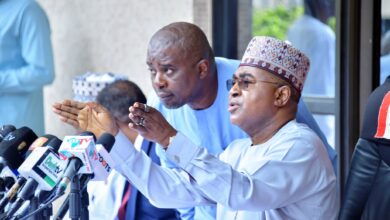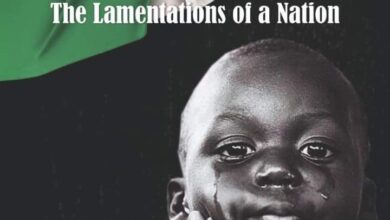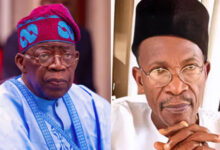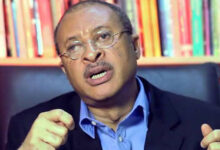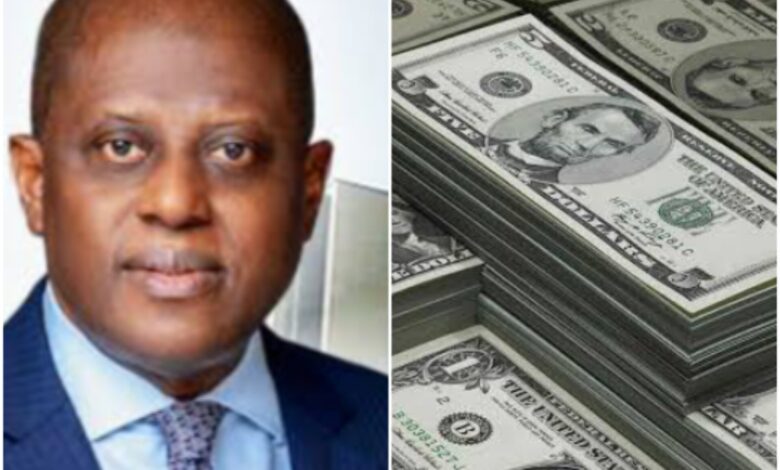
By Michael Chibuzo
I have watched very keenly the flurry of activities in Nigeria’s foreign exchange market in the past couple of days. It is obvious that the Central Bank of Nigeria under the leadership of Dr. Yemi Cardoso has laid down a monetary chess challenge with the dollar and operators of Nigeria’s foreign exchange market.
On 22nd September, 2023, Dr. Yemi Cardoso assumed office as the new Governor of the Central Bank of Nigeria. For two months, he did not make any key statement on the policy direction of the CBN until November 24, 2023 when he laid out what may be described as his first monetary policy speech at the 58th Chartered Institute of Bankers of Nigeria’s annual dinner in Lagos.
The key takeawys from Cardoso’s speech at the dinner as it affects the Nigerian economy include the following:
– There is a continuous decline in Nigeria’s crude oil production, which has led to a decline in government revenue and foreign exchange inflows;
– There is a growth in public expenditures to meet up with the required pace of growth. The combination of INCREASED public expenditure and REDUCED net public revenue led to fiscal deficit and public debt increase, placing additional strain on external reserves and contributing to exchange rate instability;
– Insecurity remains a pressing issue, affecting the agricultural, industrial, and services sectors simultaneously. The net effect is reduced national productivity, food shortages and inflation; and
– Unavoidable fuel subsidy removal and foreign exchange unification policy exacerbated a worsening macroeconomic indicators.
So, in essence, Cardoso highlighted significant challenges facing the economy to include high and rising inflation, inadequate foreign exchange supply, depreciation of the exchange rate, limited external reserves, weakened output, and high unemployment.
He said that the CBN will prioritize price stability to safeguard the livelihoods of Nigerians (ie tackling inflation) as well as stabilizing the exchange rate. These two areas if achieved will promote economic stability. The big question was always HOW.
The first thing Cardoso sought to do (in his words) was “to build back a better CBN” that had been painted in bad light over the past few years due to various factors such as corporate governance failures, diminished institutional autonomy of the CBN, a deviation from the core mandate of the CBN, unorthodox use of monetary tools, an inefficient and opaque foreign exchange market that hindered clear access, a foray into fiscal activities under the cover of development finance activities etc.
From the look of things, it was obvious that Cardoso was ready to make audacious policy u-turns from what was obtainable in the CBN. Strangely, he decided to bid his time before holding a Monetary Policy Committee meeting (last one was held in July, 2023). Obviously he wanted to clear the monetary table of a lot of ‘debris’ before constituting an MPC meeting.
The volatility and lack of adequate liquidity in the foreign exchange market (which had earlier been liberalised) posed the most immediate challenge to Yemi Cardoso and he understood the implications for businesses and investors. This is why it appears he took it up as his topmost priority.
At that CIBN dinner, Cardoso said, “in order to ensure the proper functioning of domestic and foreign currency markets, CLEAR, TRANSPARENT, and HARMONISED rules governing market operations are essential. New foreign exchange GUIDELINES and LEGISLATION will be developed, and extensive CONSULTATIONS will be conducted with banks and FX market operators before implementing any new requirements.”
On January 22nd, the CBN fixed February 26 – 27 as dates for its 293rd Monetary Policy Committee meeting – the first since Cardoso was appointed more than four months ago.
But many did not see the back to back thunderstorm that was to come from the CBN few days later ahead of the MPC February meeting.
Between January 29th to January 31st, 2024, the CBN published four circulars containing highly significant policy moves aimed at stabilizing the foreign exchange market. Experts and laymen alike hardly finished analysing the import of one CBN circular before the next one dropped. Frenzy!
CBN CIRCULAR 1
In the first circular, the CBN reminded ALL authorized dealers in the financial markets that it has permitted financial transactions to be conducted on a ‘willing buyer willing seller’ basis and therefore expects prices to be quoted and displayed in a transparent manner. This particular circular by the CBN is essentially to stop the underhand practices of dealers and their customers ‘under-reporting’ foreign exchange transaction rates.
It’s just like the reverse of what civil servants do when they are sent to buy items and bring back receipts (they inflate the figure on the receipt, while the actual price of the item is much lower). In the case of the authorised forex dealers (official market), the customers buy at higher rates but the dealers record lower transaction rate. This does not reflect the true value of the transaction and it’s a clear DISTORTION of the forces of demand and supply. By this directive, it means if an authorised dealer (banks and others) sells dollar to a customer at N1450, the dealer MUST report the N1450 as the transaction rate instead of say N890.
Meanwhile, earlier on January 26, 2024, the Financial Market Dealers Quotation (FMDQ) Exchange published a notice announcing amendments in the pricing methodology of foreign exchange transactions. The ammendments resulted in a ‘price correction’ in the official window of the foreign exchange market (which was also renamed from I&E window to Nigerian Autonomous Foreign Exchange Market (NAFEM)). The dollar closed at N1,413 at the NAFEM on Monday 29th January, 2024 after the FMDQ announcement, finishing close to the rate at the parallel market (N1,420).
With these two announcements from FMDQ Exchange and CBN, the ground was watered for the next CBN circular on foreign currency exposure of banks.
CBN CIRCULAR 2
The CBN on 31st January, 2024 released a second circular on the HARMONISATION OF REPORTING REQUIREMENTS ON FOREIGN CURRENCY EXPOSURE OF BANKS.
This in lay man’s interpretation is CBN simply trying to mandate banks to sell around $7 billion kept by them in long currency positions to customers. This circular mandates that banks must adhere to a Net Open Position (NOP) limit, ensuring it does not surpass 20% short (i.e. holding more foreign currency assets than liabilities by more than 20%) or 0% long (i.e. not holding more foreign currency assets than the bank’s shareholder funds unimpaired by losses).
The immediate impact was an expected increase in forex liquidity in the market. Many banks instead of selling FX to customers who need them, would rather ‘hoard’ the dollars and hope that the scarcity will drive up the value. This is why many of these banks have been declaring huge earnings/profits. They excessively bet on a weakening of the Naira.
CBN CIRCULAR 3
After limiting the foreign currency exposure of banks and forcing them to offload their excess dollars into the official market (at rates now at par with the parallel market rates) the CBN now turned its focus to the International Money Transfer Operators (IMTO) with its third circular in 48 hours. This time around, the CBN announced the removal of allowable limit of exchange rate quoted by IMTOs with the target being to draw the around $24 billion annual diaspora remittances under the umbrella of the official foreign exchange market.
The reason for this move by the CBN is simple: the apex bank saw that despite the huge diaspora remittances into Nigeria, very little of it finds its way into the official foreign exchange market with the majority of the dollars remaining offshore after the IMTOs convert the FX to Naira. Part of the reason for this practice is that the rates to be quoted by the IMTOs were capped within a band of +/- 2.5% of the prevailing NAFEX rate (official FX market rate). In other words, before now the money transfer operators were required to quote rates within an allowable limit if – 2.5% to +2.5% around the previous day’s closing rate of the official foreign exchange market.
Before July 10, 2023, recipients of diaspora remittances through CBN-approved IMTOs did not have Naira as a payout option rather it was mostly USD and eNaira. The CBN had in November 2020 mandated that all remittances from the diaspora into Nigeria must be paid to the Nigerian recipients in US dollars. The aim was to shore up Nigeria’s foreign reserve by leveraging on inflows from diaspora remittances. The CBN however reversed that policy in a July 10, 2023 circular which allowed the 62 IMTOs approved by the CBN to settle recipients of remittances in Naira but insisted that the exchange rate must be the prevailing rate at the official market on the day of transaction.
The money transfer operators flouted the CBN directives and rather engaged in arbitrary rate quotes outside the – 2.5% to +2.5% permissible limit imposed by the CBN. In a September 13 circular, the CBN frowned at the sharp practices and threatened various sanctions against IMTOs who are in breach of the allowable limit regulations while providing international money transfer services in the country. Many of these IMTOs decided instead to be settling conversion transactions from USD to Naira offshore to bypass the CBN allowable limit regulation. This meant diaspora remittance inflows into the official foreign exchange market dried up.
In an attempt to reverse that trend, the CBN under Yemi Cardoso by these recent circulars have now removed that cap on quoted rate for the IMTOs. They can now quote exchange rates for Naira payouts to beneficiaries based on the prevailing market rates at the NAFEM on a willing seller, willing buyer basis. This means, NO LIMIT. The rate is at the mercy of the interplay of forces of demand and supply. The CBN simply wants to remove all controls that limit the FX rate and allow market forces determine the swing direction of the Naira. A tricky situation, but one that potentially have significant benefits too for our macroeconomic stability.
By literally fighting ‘dirty’ with the parallel market, Cardoso is seeking to rechannel FX from the parallel market into the unified official foreign exchange market (the NAFEM). This will ensure enough liquidity in the official market and when that happens, the forces of demand and supply will certainly help the Naira find its true market value that is stable and not dictated by intense currency speculation, which had been the major cause of the highly volatile exchange rate in recent times.
It is a very delicate chess game that Cardoso is playing but one he needed to play, since all previous control measures to stabilise the currency has not yielded the desired goals. However, there is cause to expect better results this time around. With the IMTOs move, there is a real possibility of more liquidity flowing into the NAFEM from diaspora remittances since in the short term, oil export revenue won’t be enough to add the needed liquidity while non-oil export earnings on the other hand is low (around $4.5 billion in 2023). The CBN fight for Naira stability will eventually be complemented by an expected upsurge in the foreign reserve when Nigeria ceases the importation of petroleum products once Dangote refinery achieves full production.
Nigeria spends around 38% of its dollar earnings to import petroleum products. In 2022, goods worth $53.61 billion was imported into Nigeria out of which $21.47 billion was expended on importation of petroleum products alone. In the same 2022, $56.1 billion was our total export earnings out of which $44.2 billion came from crude oil export. Therefore if we eventually remove our petroleum import burden with the coming of Dangote refinery, it will massively swell our foreign reserve and enhance the CBN’s ability to provide dollar liquidity in the FX market for imports. That of course is the medium to long term outlook.
The February 26th to 27th MPC meeting will be very interesting and industry watchers would be eager to know which other move Cardoso will make in this increasingly desperate battle of wits and will. However one thing is becoming obvious, in this Cardoso Naira vs Dollar monetary chess game, it is a fight to the finish!

